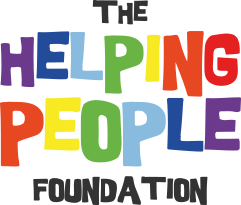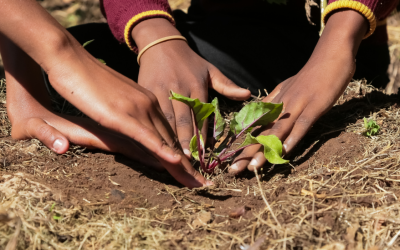CURRENT LIVING CONDITIONS IN MADAGASCAR
SCHOOL
The educational system also leaves much to be desired. Almost half of the 5-17 year olds have to work. Tens of thousands of children work in the vanilla plantations and in the quarries, sometimes under slave-like conditions. This is another reason why one third of the children do not even manage to complete primary school.
At least, in recent years, the proportion of illiterate people in the country has been declining, and for 2018 it is reported to be about a quarter. Conversely, children are in school longer on average than before. It is obvious, however, that such progress is jeopardised if other basic needs cannot be met. When everyone is busy looking for food, as is the case now in the south, then of course no one thinks about things like going to school.
MEDICINE
Madagascar has been a plague hotspot for decades, with a few hundred cases every year, mostly from October to April. In 2017, the situation became much more dramatic - earlier than usual, about 2000 people fell ill with pulmonary tuberculosis, one in ten of them died, despite large-scale relief efforts. An uncontrollable epidemic of medieval proportions was to be feared, but was then prevented. Due to the current famine, there are many accompanying diseases that need to be treated.
Water
Almost half of the people in Madagascar do not have access to clean drinking water. In the capital it is 97 percent - which means that the percentage in the countryside is considerably lower. Secure sanitation is only available to ten percent of the population. In rural areas, however, this share is only two percent. Many medical problems result from the interaction of poor nutrition and insufficient supply of clean drinking water.
nutrition
The current hunger crisis in southern Madagascar is so serious that it must be a focus of attention before anything else here. 1.3 million people are currently, in early 2022, affected by malnutrition and food insecurity; almost 30,000 inhabitants are in acute famine. Half a million children are malnourished.
The conditions are tragic. People eat what they find: Roots, grass and leaves, cockroaches and grasshoppers, occasionally clay and leather. There is food available, but it has to be purchased. Due to the Corona pandemic, food prices have risen sharply, especially for basic foodstuffs. At the same time, it has become much harder to find paid employment. Some have long since sold all their possessions in order to be able to buy food. Families are also said to have sold their daughters for marriage.

Geography
Madagascar is the fourth largest island in the world and lies about 400 kilometres off the east coast of Africa. From north to south, the extension is just under 1600 kilometres; Madagascar is up to 580 kilometres wide. Madagascar covers an area of 587,000 square kilometres (see goruma).
The early separation from the mainland during the continental drift and the isolated location in the Indian Ocean meant that a diverse and special animal and plant world was able to develop on Madagascar. The differences in climate between the various regions also contribute to the diversity. The east coast has tropical heat with plenty of humidity, there is a climatically temperate highland, and the southwestern dry area is characterised by meagre and irregular rainfall. Originally, the island was completely forested, but due to human intervention, only a fraction of the rainforest remains.

History
In the first democratic election in 1960, the socialist PSD gained a commanding position. There was unrest in the early 1970s, and in 1972 a coup led to a military dictatorship. In 1975, a strongly socialist regime came to power under Didier Ratsiraka. The close ties with France were severed, the Soviet Union was the new prioritised partner.
Numerous nationalisations caused economic collapses in the following years, famines resulting from production losses. Nevertheless, the government was able to hold on to power for a long time. It was not until 1991 that it was overthrown after a long general strike, but after five years of exile Ratsiraka was re-elected president and ruled until 2001.
His successor Marc Ravalomanana gained so much popularity that he was re-elected in 2006, but then had to hand power back to the military in 2009. This overthrow led to a severe political crisis; Madagascar was politically isolated for four years.
DEMOCRACY RETURNS
In 2013, Madagascar was able to return to democratic politics. Presidential and parliamentary elections were held, with the support of the United Nations. In 2018, there was a peaceful transfer of power after renewed elections. Andry Rajoelina has been President of the Republic since the beginning of 2019, and Christian Ntsay has been Prime Minister since June 2018.
One of the country's political problems is its almost desolate financial resources. There is simply not enough money to invest adequately in modern infrastructure, healthcare and education.
In addition, a small ruling class profits from the country's natural resources and blocks fundamental reforms. Governance and the rule of law are lacking, corruption is rife and widespread. So is mismanagement. Accordingly, the citizens' trust in the state is low. The population is to a large extent unable to control the government and to bring its own interests into the political process.

Economics
Madagascar is one of the least developed countries in the world, with more than three quarters of its inhabitants living in extreme poverty. Only ten percent are above the poverty line. Almost every second child under five is chronically malnourished. The gross national income per capita of the equivalent of 480 US dollars per year is far below the average of other sub-Saharan African countries.
Poverty is particularly high in rural regions. In the countryside, 80 per cent of the population belong to the lower classes, whereas in the cities 80 per cent belong to the upper classes. The richest fifth of the population has 50 per cent of the income.
Yet Madagascar certainly has potential. There are fertile soils and rich deposits of nickel, titanium, bauxite and graphite. Gold could also be extracted, but due to a lack of water in the south, it is not mined precisely where the revenues are most urgently needed. There is also great potential for the use of renewable energies from wind, sun and water.
MADAGASCAR AN AGRICULTURAL COUNTRY
Madagascar is primarily an agricultural country, 87 percent of the workforce has a job in agriculture. Only 4 per cent work in industry, the remaining 9 per cent for the public sector, in trade or in the service sector. Vanilla is exported to a significant extent, as well as coffee and cloves.
But the agricultural situation is difficult. Madagascar is vulnerable to floods, droughts and cyclones. They lead to crop failures and damage to infrastructure, thus endangering the livelihood of the population. In the south-east of the country, for example, people live from growing cassava, sweet potatoes, maize and rice. But yields are meagre, and floods often destroy the harvest. New farmland is needed, but the farmers clear the rainforest and do not respect the boundaries of the Befotaka Midongy National Park. Thus, more and more forest areas are disappearing, with all the consequences for the ecosystem.
Beauty and diversity of nature could bring many revenue opportunities through tourism. Tourism is already an important economic factor, could be further expanded. Above all, it takes place largely in the green north of the island; the dry south does not benefit. From a sustainability point of view, however, further expansion would also have to ensure that the remaining rainforests are protected.

POLITICS
Madagascar is one of the last populated areas on earth. The first people probably appeared there around 350 B.C., but permanent settlement did not begin until about 1500 years ago. The Polynesian seafarers of that time were followed by Arab and African seafarers. With an increase in population, political structures solidified in the form of different kingdoms. Around the year 1400, these covered the entire island.
Merina Empire from the middle of the 17th century. The reign of terror of Queen Ranavalona from 1828 to 1861 has gone down in the history books. It terrorised its own people and reduced contacts with foreign countries to a minimum. Their successors changed the political direction, but were not in charge for long. In 1883, France conquered the island and made it a colony.
Attempts to rebel against the French failed in 1918/19, 1929 and 1947/48. Although an independence movement emerged in the mid-1940s, it could not act legally - martial law was in force until 1950 and all political activities remained banned until 1955. Madagascar became independent in 1960.
POLITICAL PROBLEMS IN MADAGASCAR
One of the country's political problems is its almost desolate financial resources. There is simply not enough money to invest adequately in modern infrastructure, healthcare and education.
In addition, a small ruling class profits from the country's natural resources and blocks fundamental reforms. Governance and the rule of law are lacking, corruption is rife and widespread. So is mismanagement. Accordingly, the citizens' trust in the state is low. The population is to a large extent unable to control the government and to bring its own interests into the political process.
Sources:
goruma. Madagascar: geography, map; URL: https://www.goruma.de/laender/afrika/madagaskar/landkarte-geografie (last accessed Jan 29, 2022).
goruma. Madagascar: population and cities, capital and other cities; URL: https://www.goruma.de/laender/afrika/madagaskar/bevoelkerung-staedte (last accessed Jan 29, 2022).
statista. Madagascar: total population from 1980 to 2010 and projections to 2026 (in millions of inhabitants); URL: https://de.statista.com/statistik/daten/studie/408531/umfrage/gesamtbevoelkerung-von-madagaskar/ (as of Jan. 21, 2022).



